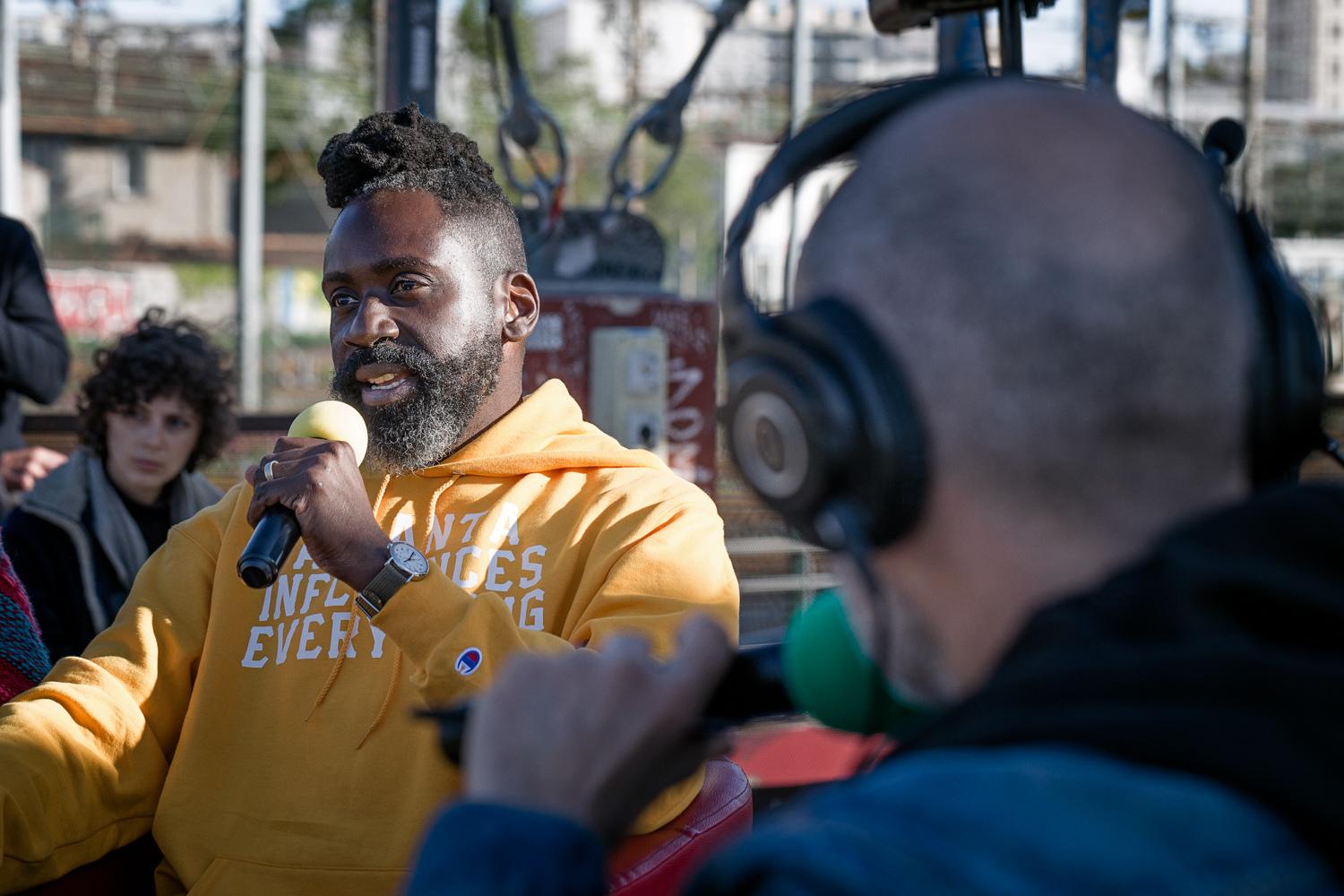Discover J. Olu Baiyewu’s contribution – Terres Communes 2023Découvrir l’intervention de J. Olu Baiyewu – Terres Communes 2023

Click here to listen to this interview.
J. Olu., You’re the Director of Urban Agriculture programs for the City of Atlanta. You’re a strong proponent of urban agriculture. In Atlanta, there are urban farms, gardens and urban food forests. In your opinion, has the world become aware of the urgency of the situation, or are some continents still failing to recognize it?
Before I get started, there is one thing that is important in urban agriculture : we’re talking about healing the land… But it’s also about healing the people. In the United States of America, the history of agriculture is horrid: we have the displacements and the murders of indigenous native American communities, the stealing of African bodies from Africa to plow the land. And then even to this day, largely when we think of food systems, it is populated by people of Spanish-speaking descent whether it’s the restaurants or the fields. So, I’d like to highlight and to acknowledge that.
And then lastly, I definitely want to give my honor, gratitude and respect to everyone, all of our relations who honor and respect the Earth as we go forward.
To answer your question, the world is definitely noticing and Atlanta is definitely noticing. During Covid, we went to the grocery stores, and at least one time there was no food inside the grocery store. It didn’t matter if you lived in an affluent community or low-income community. That made it very clear that the food system is broken. We can address that by local systems, hyper local systems and regional systems, and urban agriculture is a key piece of that.
How many people live in Atlanta, and how many eat and buy ultra-local food?
The city proper is about five hundred thousand. The Atlanta Metro Area is about six million. There are very many jurisdictions and municipalities. As far as who is aware of urban agriculture, maybe we’re about 50%. As far as it’s about who is participating, it varies, because some people are doing the production, some are doing creation of value-added products, some are agricultures and distributors, and then we can’t forget about those who are composting and doing the organic recycling, feeding the earth, the pollinators. So, it’s hard to say the percentage, it’s probably less than 50%, but it’s definitely growing.
Is Atlanta a pioneering town, or are there plenty of other cities in the U.S. with organizations like yours?
It is both, for sure. Atlanta was the first city to have an urban agriculture director in the United States. That was 2015, I’m the second, I started in November 2020. Atlanta is pioneering in the recognition that this position needs to be in the government place with some level of authority, negotiation, decision making. But definitely I would acknowledge that, in the United States, when it came to the organic movements, there were two streams; one was from the West Coast (California, Washington, Oregon), and then, it’s just indigenous original practices, native practices that had existed since the beginning but didn’t have the language – “organic,” or things like that.
How will urban agriculture reduce food inequalities? Does growing produce on site limit transport costs and allow for lower prices?
The key, as we’ve heard from many people today, is collaboration. Many hands make light work. Also, addressing the historical context, thinking about the repair of the land and the repair of the culture. In the city we have vacant, underutilized properties, they give to the communities the opportunity to start their own farm or garden, like in Marseille and other places. And when we’re doing the selections, again, it’s an equitable process, ensuring that the communities that have been systematically under-resourced, undervalued at times, are also at the forefront of being able to now receive the benefits of this wonderful food that we’re growing in and this wonderful experience.
A “food forest”: what is it?
City of Atlanta has the Urban Food Forest at Browns Mill [South Atlanta] . It is 7.1 acres and it’s the largest public food forest in the United States. This space is already forested. There’s some food that is growing there: different types of berries, nuts, mushrooms, and also injecting into it more raised beds, pollinator beds, green infrastructure, and stewarding it by the community organizations. So the city owns the property, but it is in collaboration with the community that directly does the invasive species pieces removal, the plantings, distributions and programs.
Is it the return of local harvesting?
It is definitely about returning to the land, it is also about education and awareness. Earlier today, someone mentioned that we need to be visible in urban agriculture. We need to be transparent, people need to see it, they need to touch it, they need to smell it. The urban food forests give people that opportunity to return to nature and to participate.
